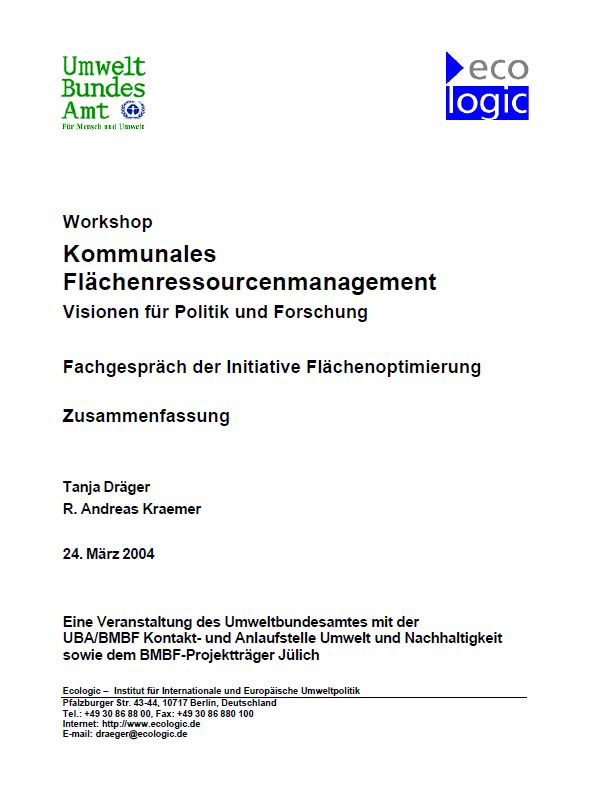How can the rate of land consumed on greenfield sites for purposes of urban development and traffic be reduced? Which instruments are most appropriate to use in reaching this goal? How significant will fiscal, economic, regulatory and planning tools be in reducing and managing land development? Which tasks will have to be carried out at the national, regional and local level to support this aim? These and other vital questions were discussed at the Workshop Land Use Planning and Management at the Local Level.
Objectives of the Workshop
- To present ongoing efforts in Germany to reduce land development on greenfield sites at the national, regional and local levels
- To exchange experiences and lessons learned from actors at the local level, as well as to discuss their expectations regarding the future opportunities to achieve a sustainable level of land development on greenfield sites
- To identify deficiencies
- To formulate policy recommendations and identify research needs
- To contribute to the ongoing discussion process regarding the "National Sustainability Strategy"
Background
Land use management is one of the most urgent and complex environmental protection issues, and it has become a crucial political issue at the European, national and local levels. According to the main findings of the territorial census of 2001, the level of land development on greenfield sites for urban development and traffic in Germany, at approximately 105 ha/day, is still high. Taking into account that the level in recent years has been as high as 130 ha/day, a gradual reduction in land development on greenfield sites has begun. However, this decline is due primarily not to efforts to environmental protection efforts to combat problems like soil sealing and fragmentation, but to the ongoing difficult economic conditions in Germany.
In Germany, land use management became a crucial issue after the publication of the "National Sustainability Strategy", which announced the goal of reducing the rate of land consumption on greenfield sites for purposes of urban development and traffic to 30 ha/day by 2020.
Land use planning and management is a distinctive cross-sectoral issue, as many stakeholders are involved. Therefore, single measures have very little impact in reducing demand for land. To reach a sustainable level of land use, a wide variety of instruments, including fiscal, economic, regulatory and planning tools, must be used in combination. Furthermore, the activities, strategies and instruments must involve the relevant actors, such as representatives from the administrations (national, regional and local level) and the different disciplines (regional versus urban planning, nature conversation and environment protection, economy and traffic) in order to efficiently achieve a sustainable level of land use.






